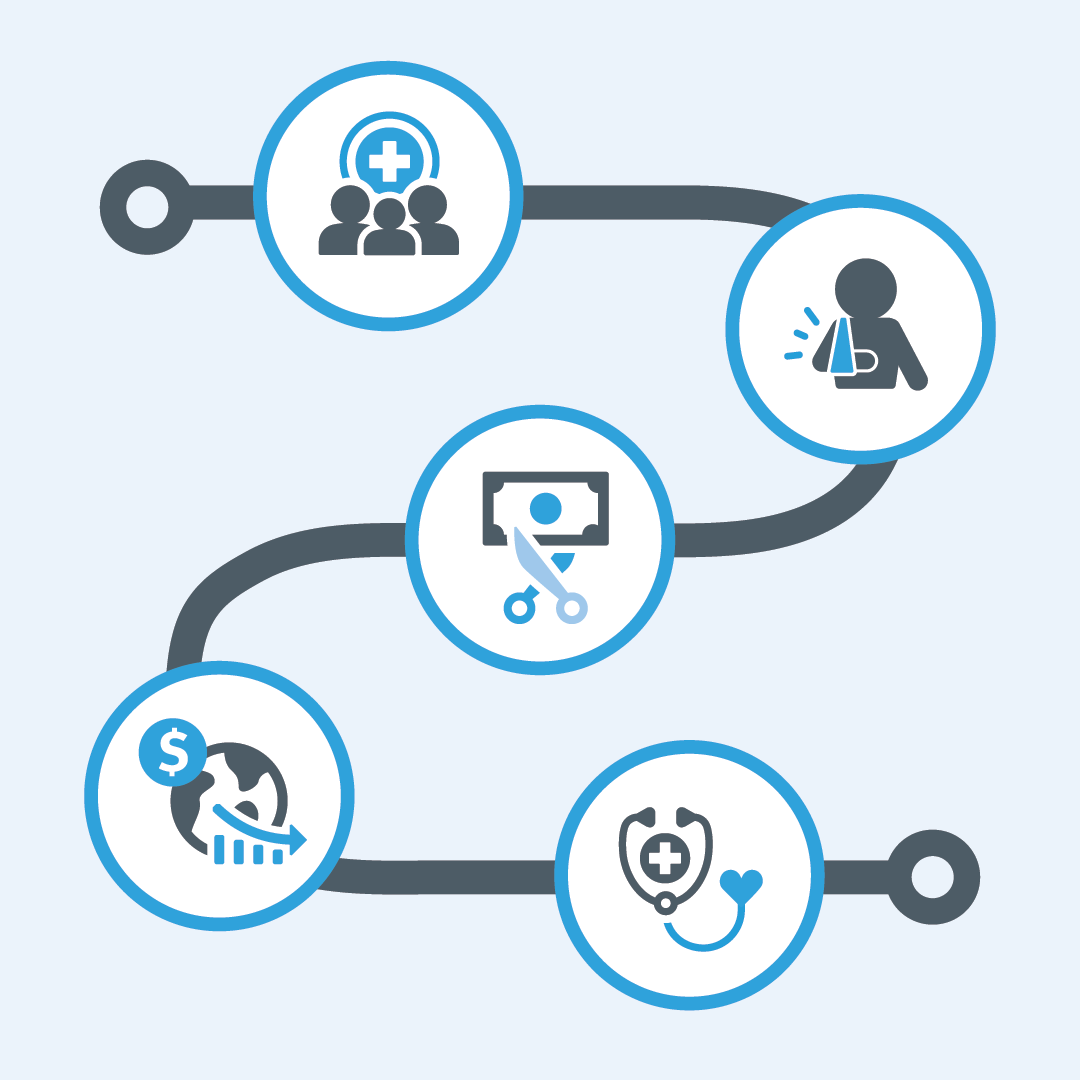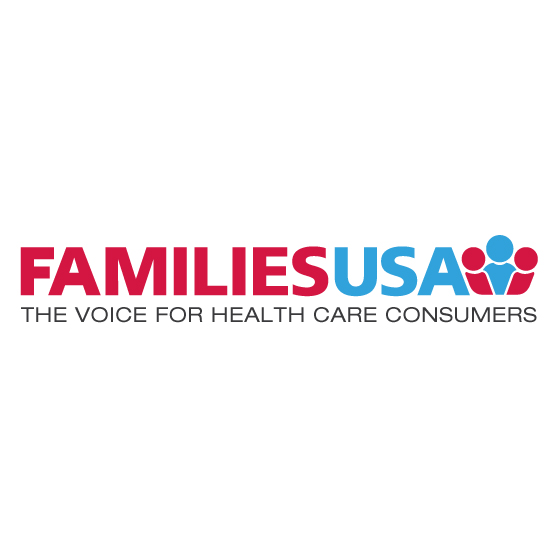
Key Growth in Marketplace Open Enrollment: Trends and Insights
02.23.2024
The Snapshot
Earlier this year, the Centers for Medicare & Medicaid Services (CMS) released a report showing record health care enrollment — meaning millions of families have affordable coverage this year.1
Here are the highlights:
- Record Enrollment: The 2024 enrollment period saw a surge in sign-ups, with more Americans gaining access to affordable coverage.
- Who Was Covered: Plan selections include approximately five million (24% of total) who are new to the Marketplace in 2024, and 16.3 million (76% of total) are returning.
- The Growth in Enrollment: Enrollment in both Medicaid and the Marketplaces is higher than it was in 2020, prior to the public health emergency.2 Healthcare.gov and state marketplaces remain an important source of coverage for people with income just above Medicaid limits, but also to many other families who could not otherwise get comprehensive and affordable insurance.
Over 21 million people enrolling in health coverage through the Marketplace is a significant milestone. This ensures that health doesn’t come at the expense of financial well-being, bringing families closer to the care they need, precisely when they need it.
The Trend
Year over year, the enrollment momentum grows, with more families and individuals accessing affordable health coverage, reaching a high point this year. This is a huge win and can ensure health does not come at the expense of a person’s wealth, and families are closer to getting the care they need when they need it. Marketplace coverage provides important benefits that include both preventive care at no cost; coverage before, during and after a birth, as well as for birth control; and coverage to treat physical and mental health conditions.
“A record number of people in the United States have health care coverage through the Affordable Care Act’s Marketplace — more than at any point in history. More people with access to preventive care means a healthier country and lower health care costs across the board.” – HHS Secretary Xavier Becerra.3
An additional five million more people joined Marketplace coverage than in 2022, following an upward trend since the establishment of Affordable Care Act (ACA) marketplaces in 2014.4 In the span of one year (2022–2023), Marketplace signups rose by 30% with a few key states (Texas, Florida, and Georgia) accounting for a large portion of this increase.
So, what’s driving this growth?
The Drivers
Key provisions in the American Rescue Plan Act (ARPA) and the Inflation Reduction Act (IRA) were integral to ensuring families had affordable marketplace plans in which to enroll. The ARPA was a response to the COVID-19 pandemic and included an expansion of the ACA health insurance subsidy, Advance Premium Tax Credits (APTCs). This temporary expansion lowered premiums for Marketplace health plans, reducing overall health costs for people at income levels above and below the federal poverty level (FPL).5 In 2022, the IRA was signed into law and extended APTCs through 2025, preventing out-of-pocket premium prices from rising again.6 Experience shows the importance of these enhanced premium credits. Advocates and several lawmakers are now seeking to make them permanent.
Take for instance a 60-year-old couple with an income of $70,000 annually. Without enhanced subsidies, they would have faced a hefty $2,026 monthly premium (or $24,307 in 2024) for a full-price silver plan. Currently, due to the enhanced subsidies, they pay $430 per month (or $5,519 annually) for that plan.7
Without the enhancements that first the ARPA and then the IRA continued to provide, it is estimated that premium payments would have averaged about $800 more per person per year. That’s a lot more that families in America can have back in their pockets to get braces, afford books for school, make a down payment on a new car, and more.8
Marketplace coverage is not just valuable for providing additional coverage options for a variety of families, but it has also been a critical safety net for those affected by Medicaid unwinding. During the COVID-19 public health emergency (PHE), states were prohibited from disenrolling people from Medicaid, which would have left them without health coverage during a global health care crisis. In April 2023, PHE came to an end and states began determining who was still eligible, and who should be disenrolled from Medicaid.
Current data shows that over 17 million people have lost Medicaid coverage, either because they are determined by their state to no longer be eligible, or due to procedural difficulties like not understanding where and how to apply for renewal.9
The record marketplace enrollment numbers demonstrate that the marketplace provided a key place for individuals and families to turn for affordable coverage if they were no longer able to receive Medicaid.
Solutions like APTCs are critical to ensure that families have access to affordable health care options. It is key for Congress to work to permanently extend these health care affordability lifelines, which expire at the end of 2025.
The People
It’s clear that trends, data, and numbers tell a story, but so do you. At the end of the day, these policies are impacting American families, and we want to talk about these changes and why they matter. If you’ve received APTCs or had your premiums lowered when accessing a Marketplace plan, we want to talk to you, hear from you, and elevate your voice to help others.
Footnotes
1. https://www.cms.gov/newsroom/fact-sheets/marketplace-2024-open-enrollment-period-report-final-national-snapshot
2. https://www.whitehouse.gov/cea/written-materials/2024/01/24/record-marketplace-coverage-in-2024-a-banner-year-for-coverage/
3. https://www.hhs.gov/about/news/2024/01/10/under-biden-harris-administration-over-20-million-selected-affordable-health-coverage-aca-marketplace-start-open-enrollment-period-record-high.html
4. https://www.kff.org/policy-watch/another-year-of-record-aca-marketplace-signups-driven-in-part-by-medicaid-unwinding-and-enhanced-subsidies/
5. https://www.brookings.edu/articles/what does-the-american-rescue-plans-premium-tax-credit-expansion-and-the-uncertainty-around-it-mean-for-state-health-policy/
6. https://www.agentbrokerfaq.cms.gov/s/article/How-does-the-American-Rescue-Plan-ARP-change-Marketplace-premium-tax-credits
7. https://www.kff.org/interactive/subsidy-calculator/#state=&zip=&income-type=dollars&income=70%2C000&employer-coverage=0&people=2&alternate-plan-family=&adultcount=2&adults%5B0%5D%5Bage%5D=60&adults%5B0%5D%5Btobacco%5D=0&adults%5B1%5D%5Bage%5D=60&adults%5B1%5D%5Btobacco%5D=0&child-count=0
8 https://www.whitehouse.gov/cea/written-materials/2024/01/24/record-marketplace-coverage-in-2024-a-banner-year-for-coverage/
9 https://www.kff.org/report-section/medicaid-enrollment-and-unwinding-tracker-overview




